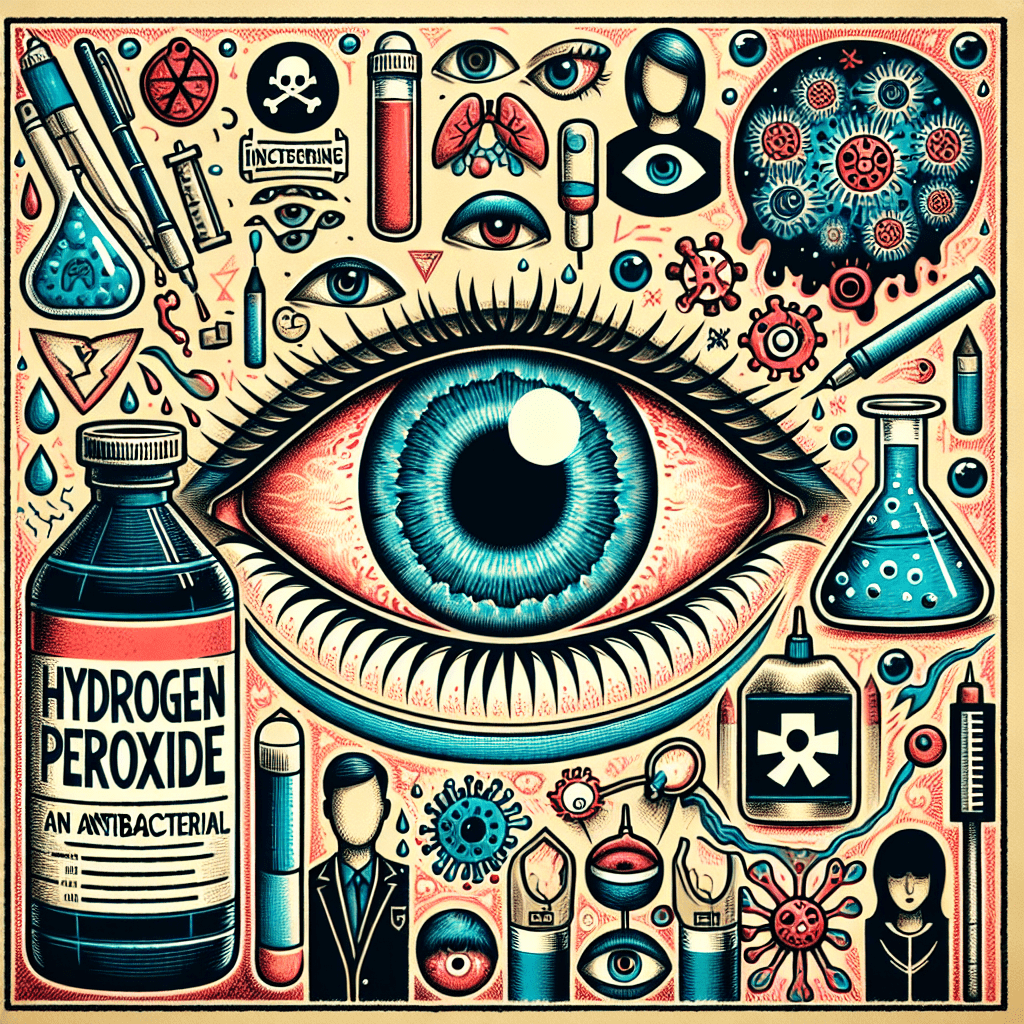Introduction
In the grand orchestra of molecules, hydrogen peroxide plays a striking solo, revered for its bubbling effervescence when tackling germs. It stands as a formidable contender in the realm of antiseptics, but is it truly a virtuoso among antibacterials? This article delves into the heart of hydrogen peroxide’s antibacterial prowess—exploring its efficacy, safety, and place in modern medicine.
- The Chemistry Behind Hydrogen Peroxide
- How Effective is Hydrogen Peroxide Against Bacteria?
- Safety Concerns and Considerations
- Alternative Antibacterial Agents
- Conclusion: The Final Verdict on Hydrogen Peroxide
The Chemistry Behind Hydrogen Peroxide
At its core, hydrogen peroxide is a simple compound—a duo of hydrogen atoms bonded to a pair of oxygen atoms (H2O2). Yet, like a magician revealing hidden wonders, this molecule unfurls a cascade of reactions when it encounters organic material. Its bubbling action is more than a mere spectacle; it’s a sign that the molecule is breaking down into water and oxygen, releasing reactive oxygen species that can dismantle bacterial cell walls.
How Effective is Hydrogen Peroxide Against Bacteria?
A question akin to asking if the sun rises in the east, yet worth exploring. When applied, hydrogen peroxide’s oxidative prowess can indeed disrupt microbial life. It works brilliantly against anaerobic bacteria—those that loathe oxygen. However, its efficacy wanes with tougher, resilient strains or when confronting larger areas of infection. For instance, if you have an eye infection or stye, consider specialized treatments focused on clear vision.
Safety Concerns and Considerations
No story is complete without its shadows. While hydrogen peroxide is a stalwart defender against germs, its potency can singe delicate tissues and cause irritation. Think of it as a double-edged sword; wield it wisely to avoid unintended harm. For wounds that persist in their rebellion against healing, understanding whether an infected cut will heal without intervention can be crucial.
Alternative Antibacterial Agents
In the vast arena of antibacterial agents, hydrogen peroxide is joined by esteemed colleagues—rubbing alcohol, iodine, and antibiotic ointments each play unique notes in the symphony of infection control. These alternatives often offer broader-spectrum coverage and longer-lasting effects. For deeper insights into treating infections from cuts and scrapes, exploring options such as minor cut treatments can be beneficial.
Conclusion: The Final Verdict on Hydrogen Peroxide
In conclusion, hydrogen peroxide holds its place as an effective antibacterial agent, particularly for minor cuts and abrasions. However, like any tool, its effectiveness depends on how and where it is used. For more severe or persistent infections, consulting medical professionals or considering alternative treatments may yield better results. Ultimately, while hydrogen peroxide can be part of your first aid toolkit, remember to assess each situation with an informed perspective.
Key Takeaways
- Hydrogen peroxide is effective against certain bacteria due to its oxidative properties.
- Caution is needed to avoid harming healthy tissue during application.
- Other alternatives may provide broader protection against infections.
- Consulting healthcare professionals for persistent infections is advisable.
FAQ
Q: How does hydrogen peroxide work as an antibacterial?
A: It releases reactive oxygen species that damage bacterial cell walls.
Q: Can hydrogen peroxide be used on all types of wounds?
A: It’s best suited for minor wounds; larger or deeper wounds may require professional medical treatment.
Q: Are there any side effects of using hydrogen peroxide?
A: Yes, it can cause irritation or damage to healthy skin if used excessively.
For more comprehensive insights on wound care and infection prevention, visiting reliable sources such as the CDC’s guidelines on disinfection can provide valuable knowledge.
To learn more about related topics, consider reading about whether sepsis can develop from cuts, enhancing your understanding of infection risks and care strategies.
Explore further advice on proper wound care and infection management from authoritative health resources such as Mayo Clinic’s guide on first aid for cuts.




